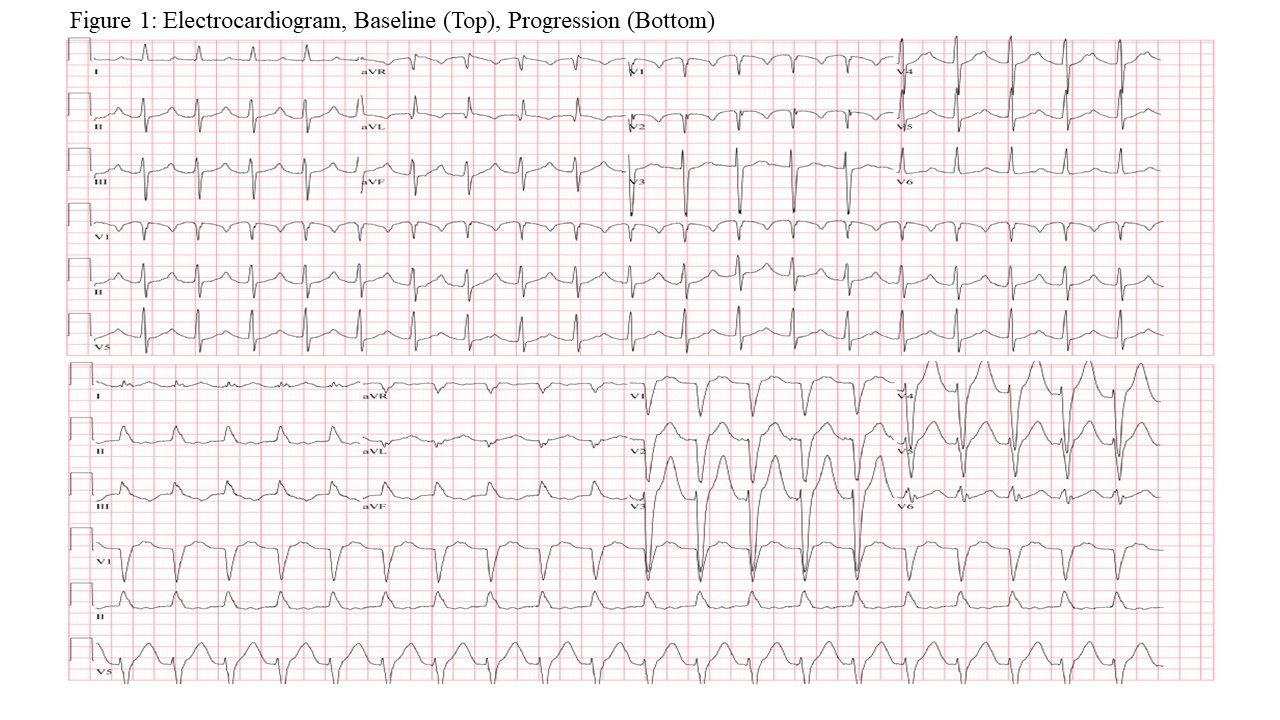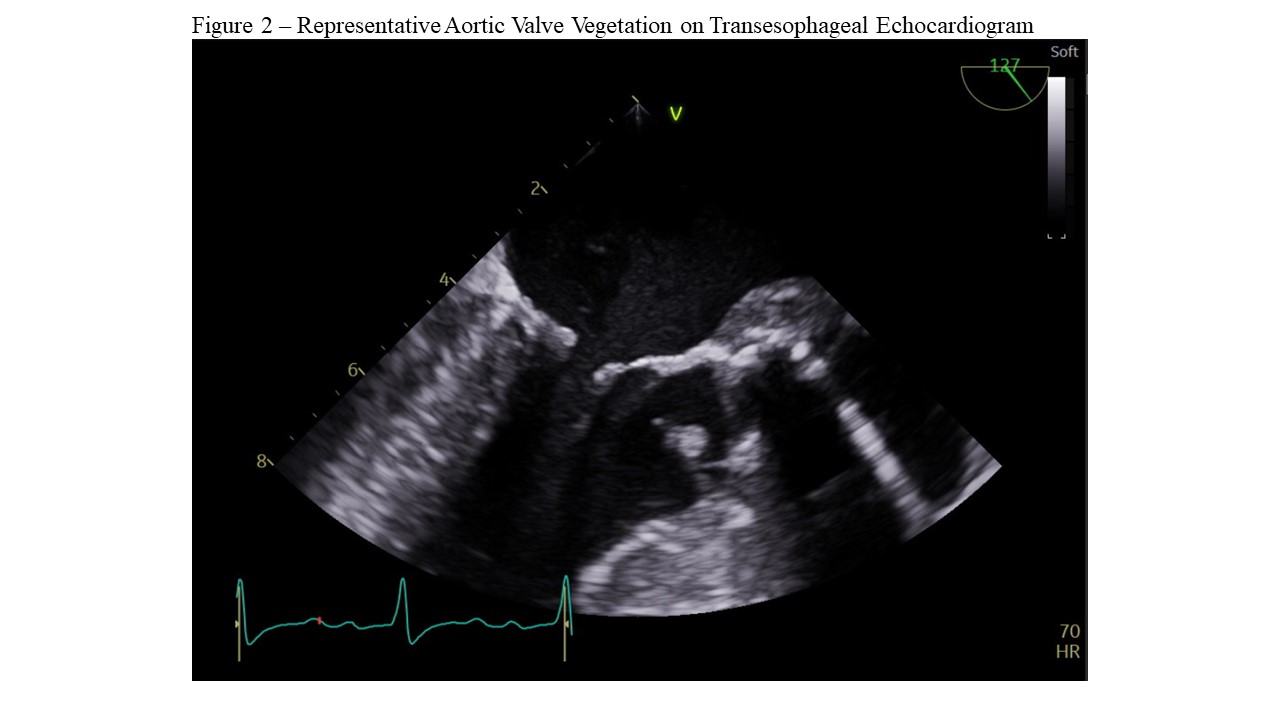Case Presentation: A 36-year-old man with 2 prior mechanical valve replacement for congenital aortic valve stenosis presents to the hospital with 2-week history of fever, chills, fatigue, generalized weakness and malaise. He had his first aortic valve replacement at the age of 17 and redo for valve for restenosis of the aortic valve with severe regurgitation with sub-valvular membrane at age 34. He was empirically started on vancomycin and piperacillin-tazobactam for presumed endocarditis. Electrocardiogram was concerning for involvement of the conduction system with development of 1st degree atrioventricular block and left bundle branch block therefore a temporary screw-in pacemaker was placed. A transesophageal echocardiogram demonstrated 3 vegetations on the aortic valve (largest 10 mm x 19 mm) with perivalvular extension into the posterior aortic root consistent with abscess and dehiscence. Blood cultures grew Aggregatibacter actinomycetemcomitans and was switched to ceftriaxone for targeted antimicrobial therapy. He underwent emergent redo surgery with debridement of the aortic abscess, insertion of a 21 mm On-X mechanical aortic valve (On-X Life Technologies, Austin, Texas, USA) and pericardial patch reconstruction of the aortic root. He completed 6 weeks of IV ceftriaxone and made a good recovery.
Discussion: HACEK (Haemophilus, Aggregatibater, Cardiobacterium, Eikenella, and Kingella) are gram negative organisms that are typically part of the oropharyngeal flora. Though not particularly pathogenic they can be a rare cause of endocarditis (approximately 1-3%) of cases. These organisms typically affect those with structural heart disease or prosthetic valves. Diagnosis is difficult as they have a subacute clinical course and was previously hard to culture due to their fastidious nature.
Conclusions: Aggregatibacter actinomycetemcomitans represents approximately 20% of HACEK endocarditis cases. These organisms are exclusively found as part of normal oropharyngeal flora and break the vascular boundary during routine oral hygiene or plaque buildup. Antibiotics for 4-6 weeks with ceftriaxone is the mainstay of antibiotic therapy with surgical intervention reserved for those with heart failure, large vegetations, perivalvular abscess, or involvement of prosthetic valves. Though rare HACEK organisms should be suspected in those with recent exposure to antibiotics or those with prosthetic valves.


